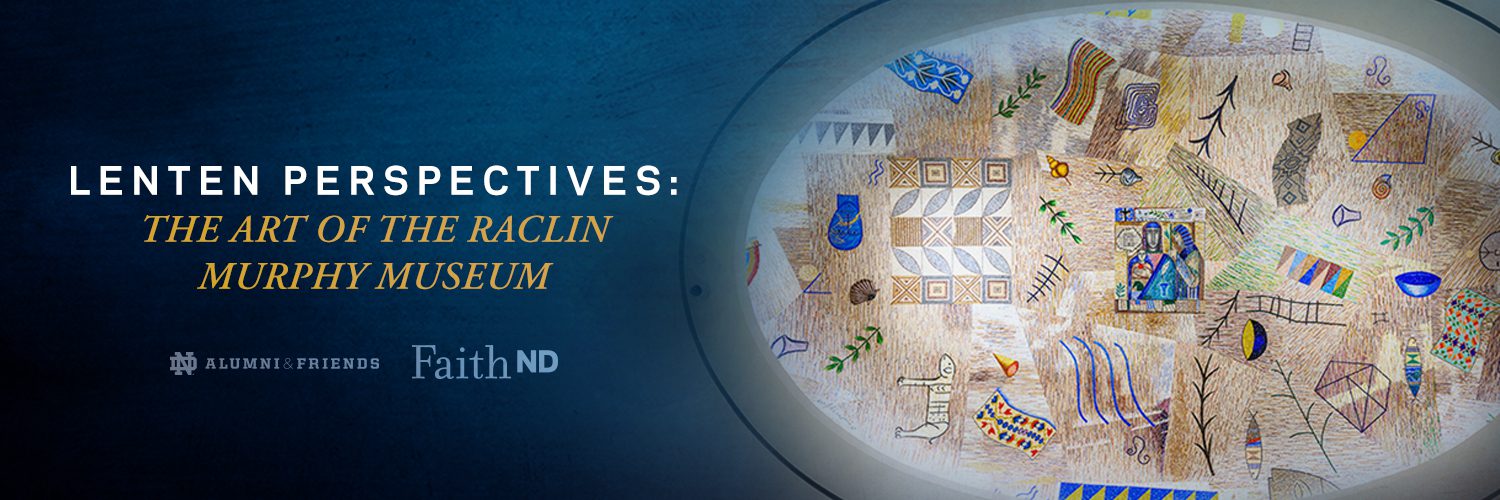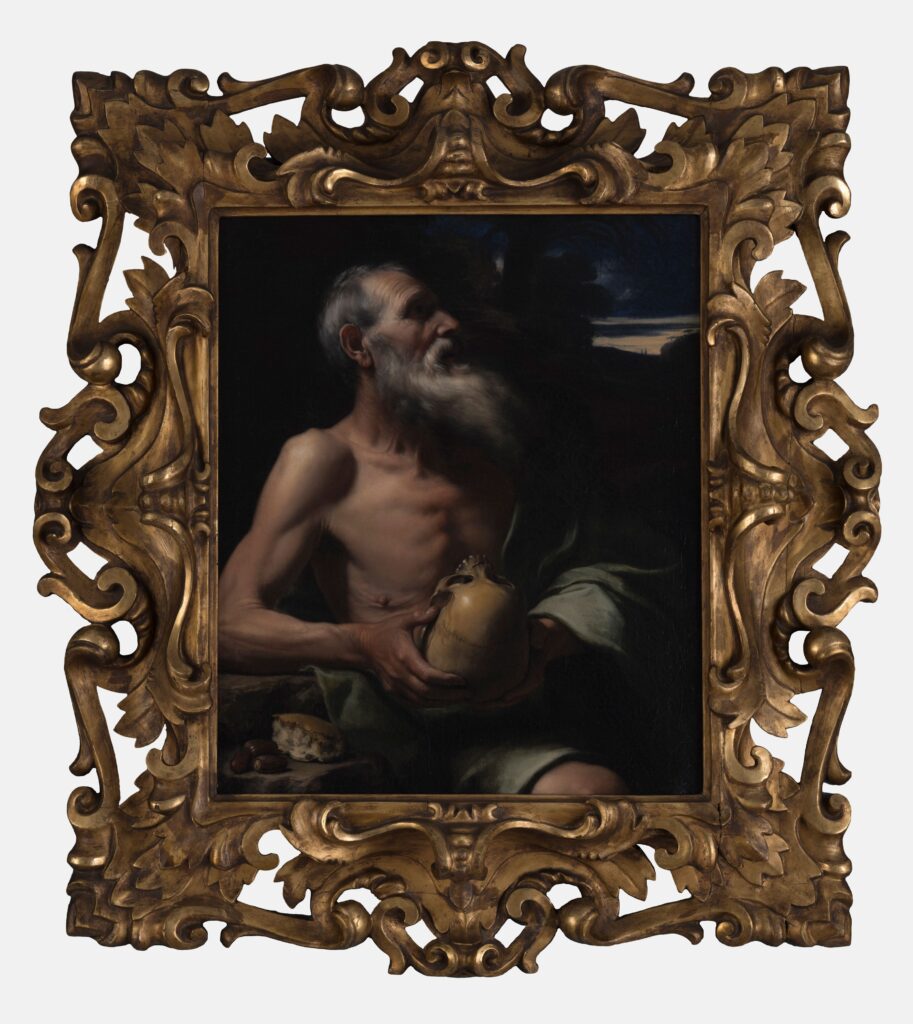Fasting with a Contrite Heart

In Isaiah and Mark’s Gospel, we are told that fasting is relational—it is our response, our sacrifice of love for those God has placed in our lives, be they the homeless, the stranger, the oppressed, or indeed the bridegroom himself—Christ. Lent has begun, and so we must ask ourselves how we will discern and respond in this season as we, once again, take up our Lenten fasts.
Contemplate the Artwork
Friday, February 16, 2024 12:00 pm
Fr. Austin Collins, C.S.C., vice president for Mission Engagement and Church Affairs and professor of sculpture, reflects on Saint Paul the Hermit by Jusepe de Ribera. In this painting, Ribera depicts the aging ascetic Saint Paul using a warm palette of muted tones and soft, feathery brush strokes. Saint Paul’s slender arms, ruddy hands, bony chest, sagging flesh, and wrinkled appearance embody humility as he contemplates mortality, symbolized by the skull he holds. This appeal to the senses helps devout viewers contemplate higher ideals such as detachment from wealth, repentance from sins, and fasting for spiritual enrichment.
In the Mass reading for the first Friday in Lent from Isaiah, the people of Israel ask, “Why do we fast, and you do not see it? afflict ourselves, and you take no note of it?” Likewise, in this day’s Gospel, the Pharisees and disciples of John the Baptist ask Jesus, “Why do we and the Pharisees fast much, but your disciples do not fast?”
In both stories, the sacrifices God requires do not align with human expectations. We often like to have clear rules to guide us. We expect a life of fasting to appear obvious like St. Paul the Hermit, but God is not necessarily asking us to go to such extremes. Real sacrifice requires repeated discernment and active response. In Isaiah and Mark’s Gospel, we are told that fasting is relational—it is our response, our sacrifice of love for those God has placed in our lives, be they the homeless, the stranger, the oppressed, or indeed the bridegroom himself—Christ.
Lent has begun, and so we must ask ourselves how we will discern and respond in this season as we, once again, take up our Lenten fasts.
This Lent, ThinkND invites you to join FaithND and the Raclin Murphy Museum of Art for a journey of Lenten discovery through some of the most significant liturgical paintings in the Raclin Murphy collection, challenging you to contemplate prayer, fasting, sinfulness, mercy, grace, and God’s infinite love from the perspectives of the artist’s gaze. To subscribe to the FaithND Daily Gospel Reflection visit faith.nd.edu/signup.

This loaned painting of St. Paul the Hermit by Ribera is typical of followers of Caravaggio in its dramatic lighting and raw, natural depiction of the physical effects of the years of fasting and an ascetic lifestyle. From the saint’s legend, the painting illustrates the daily delivery of a half loaf of bread and three dates by a raven. The saint grasps an upturned skull with his sunburned hands as he looks up and to the right, his gray beard and the tired skin of his torso are indicative of his advanced age. These motifs—the haggard depiction of an elderly bearded ascetic, the remarkably natural portrayal of the skull, and the isolation and devotion of the subject—were to become hallmarks of Ribera’s work.
“Ribera’s half-length portrait of a saint is a stunning example of Counter-Reformation devotional art popular in the seventeenth century, and it richly complements the University’s collection of Italian religious narratives,” said Cheryl Snay, Curator of European Art at the Raclin Murphy Museum of Art. “Moreover, the artist’s emphatic naturalism and dramatic tension make it as compelling now as it was four centuries ago.”
from Museum Calendar of Events, Fall 2019
For closer viewing of this work through the digital collections of the Raclin Murphy Museum of Art, please click here.
View EventMeet the Faculty: Fr. Austin Collins, C.S.C.

Rev. Austin Collins, C.S.C., serves as Vice President for Mission Engagement and Church Affairs, a position he was appointed to in June, 2021. As Vice President for Mission Engagement and Church Affairs, Father Collins works to steward and deepen Notre Dame’s Catholic and Holy Cross mission and serves as the University’s liaison to the
Congregation of Holy Cross, U.S. bishops and the Holy See. He also oversees the Tantur Ecumenical Institute in Jerusalem and provides critical leadership for the University’s ecumenical and interfaith outreach. Other responsibilities include leadership of the Notre Dame-Newman Centre for Faith and Reason in Dublin and the Grotto Network, a University initiative that contributes to the Church’s mission to evangelize young Catholic adults.
Father Collins served from 2015 to 2020 as religious superior of Holy Cross priests and brothers at Notre Dame, during which time he also served as a Trustee and Fellow of the University. A faculty member in the Department of Art, Art History and Design since 1985, he was chair of the department from 1997 through 2003 and has served on the University’s Academic Council, Faculty Senate, Arts and Letters College Council and numerous committees.
Father Collins earned his bachelor’s degree from Notre Dame, a master of divinity degree from the Graduate Theological Union and a master of fine arts degree from Claremont Graduate University. He was ordained a priest in the Congregation of Holy Cross, Notre Dame’s founding religious community, in 1982.
As a sculptor, Father Collins’ area of practice includes public art, large outdoor sculpture, installation art and liturgical art, often with a focus on political and social issues. His more than 140 exhibitions include works at Notre Dame and other universities nationwide as well as the Frederik Meijer Gardens & Sculpture Park in Grand Rapids, Michigan. His sculptures also have been placed in 50 public and private collections, and he has delivered more than three dozen public lectures across the country.
